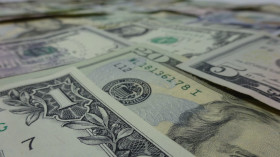The US dollar is finding some support after the Federal Reserve released its minutes from the July policy meeting. The Federal Open Market Committee (FOMC) revealed that the coronavirus pandemic wouldâweigh heavilyâ on the economy, labor market, and inflation, resulting in the central bank to maintain its stimulus efforts until the country rebounds.
According to the US central bank, the Fed reaffirmed its commitment to executing a full range of tools to support the economic rebound and growth. The FOMC is concerned that the ongoing public health crisis will pose âconsiderable risksâ to the overall economic outlook over the medium term, leaving interest rates in the target range of 0% and 0.25%. Officials also supported facilitating the flow of credit to households and businesses by increasing its holdings of Treasury securities and residential mortgage-backed securities (RMBS). It further intends to maintain its large-scale overnight and term repo operations.
FOMC participants indicated that this would be the standard policy until they are âconfident that the economy had weathered recent events and was on track to achieve the Committeeâs maximum employment and price stability goals.â
These actions would be helpful in sustaining smooth market functioning, thereby fostering the effective transmission of monetary policy to broader financial conditions.
Meanwhile, the Eccles Building seemed skeptical about the efficacy of yield caps.
Of those participants who discussed this option, most judged that yield caps and targets would likely provide only modest benefits in the current environment, as the Committeeâs forward guidance regarding the path of the federal funds rate already appeared highly credible and longer-term interest rates were already low.
Nobody dissented from the decisions made during the July 28 and 29 meeting.
Soon after the release of last monthâs minutes, the leading stock indexes wiped out all their gains and turned red. The bond market went green as the benchmark 10-year Treasury picked up a 0.011 basis point to 0.68%, while the two-year note jumped 0.001 basis point to 0.146%.
Despite the sour sentiment, gold failed to reverse its losses as it added to its decline in the middle of the trading week.
On the data front, the consumer price index (CPI) rose at an annualized rate of 1%, while the core inflation rate surged 1.6% year-over-year. Energy prices fell 11.2%, but everything else increased: food prices surged 4.1%, new motor vehicles added 0.5%, health care increased 1.1%, and shelter advanced 2.3%.
Mortgage applications jumped 6.8% in the week ending August 7, according to the Mortgage Bankers Association.
The US Dollar Index, which measures the greenback against a basket of currencies, rallied on the news as investors poured into the traditional safe-haven asset. The index soared 0.78% to 92.99, from an opening of 92.28. The index has cratered since hitting a peak of 103.00, plummeting about 7% over the last three months.
The USD/CAD currency pair rose 0.3% to 1.3201, from an opening of 1.3170, at 18:25 GMT on Wednesday. The EUR/USD dropped 0.69% to 1.1849, from an opening of 1.1932.
If you have any questions, comments, or opinions regarding the US Dollar, feel free to post them using the commentary form below.
